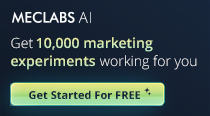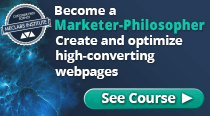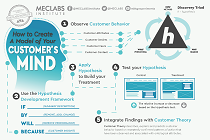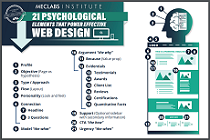
|
SUMMARY:
As the 55 and older population becomes increasingly tech-savvy, businesses that cater to that group need to adapt digital strategies. HomEquity Bank has spent the last four years building up its digital approach to seniors with landing pages, content and mobile. Read how they were able to go from 250,000 unique page visits a year, to over a million. |
Based in Canada, HomEquity Bank is the only national provider of the CHIP reverse mortgage, which helps Canadian homeowners 55 and older access the value of the equity they have in their homes.
This allows older Canadians to maintain ownership of their homes until they make the decision to move or sell.
“They have the ability to unleash the equity of their home while they're living there,” said Vivianne Gauci, Vice President, Digital Strategy, HomEquity Bank.
HomEquity partners with advisors and also works directly with Canadians 55 and older, who are part of a growing demographic that the company needs to reach out to.

“Right now, seniors make up one out of every six people in Canada and by 2030, that number will be one in every four. So you can imagine it's a very fast-growing demographic,” she said.
Not only is the demographic growing, but they are acquiring new digital skills.
“They're adopting technology. In 2013, when HomEquity Bank embarked on its digital journey, about 80% of inquiries in our direct-to-consumer business came in through the phone. Now, that ratio has completely flipped, [and] 90% of our inquiries come in through digital channels,” Gauci said.
With this huge shift in the company’s core demographic, it’s important to evolve alongside them — if not ahead of them.
“If you ask Facebook, they'll tell you the fastest growing age demographic is senior. Four years ago, our company didn't even have a Facebook page, and now it's one of our major acquisition channels. So they are definitely online and adopting technology,” she said.
CHALLENGE
“[The marketing team] understood that this was happening. Boomers were online; they were using the internet, and we just weren't harnessing that power,” Gauci said.
The team set out in early 2014 to harness the power of digital to get more customers to discover HomEquity Bank and its unique CHIP reverse mortgage service. However, at the time, there wasn’t any solid evidence that this would be successful, but the marketing team knew if they didn’t begin moving to digital, they would end up technologically behind customers.
“We really weren't sure about its potential at the time because it wasn't a successful channel,” she said.
At the time, the prevailing thought within the organization was that seniors simply weren’t online. However, “the marketing department believed otherwise, that we were really missing an opportunity,” she said.
CAMPAIGN
Beginning this campaign in early 2014, the marketing team focused on redesigning the website and continually testing to discover what would be appealing to seniors.
Through testing, the team gained insights into customers from a design and value prospective and developed their own best practices based on it.
Step #1. Redesign website for seniors
The first thing the marketing team focused on was redesigning landing pages and the overall website.
“When we launched the website, we went with the latest best practices at the time — only to learn that a lot of them didn't apply to seniors,” she said. “We knew right away that it wasn't working and we had to design something that was a lot simpler. And then, all of a sudden, we got something that actually worked with our demographic,” she said.
For example, seniors prefer a simpler website look as opposed to the sleekly designed format found on many websites.
“They liked the carousel on the homepage; they preferred big buttons. They wouldn't enter [their] information in a form on the homepage, but they would gladly click through to a subsequent page to enter information,” she said.
Within 12 days from the initial launch, they had pushed live a redesign of the website, taking these key insights into consideration. The team now had a design that converted well. Beginning in April 2014, they started scaling up traffic.
After scaling up traffic, the team revisited form testing from there, going from a form on the homepage to a one-page form behind a button.
“The next evolution was late 2015 and we did a one-page to a seven-step form,” Gauci said. “We saw a 154% lift in our conversion rate, which was fantastic.”
In early 2016, the team then moved from a seven-step to a four-step form and saw another 53% lift in conversions.
In late 2016, they implemented a progress tracker on the form and saw another 35% lift from that. Most recently, they have tried a “next steps” tracker, which generated a 20% lift in the conversion rate.

“We leveraged what we knew in our early learnings about what seniors want and don't want. So from that first failure, we learned a lot of lessons, I think, the hard way. Then we went from there,” she said.
Step #2. Use digital to build trust
In mid-2016, HomEquity Bank partnered with a spokesperson, Kurt Browning, a four-time Olympic skater and World Champion.
“Based on our research, we knew he was somebody who resonated very well with Canadians and was well liked and trusted by Canadians,” Gauci said.

Browning was actually incorporated into the form design; the team saw another 20% lift as a result. This confirmed that trust is a powerful motivator for senior customers, and the team began searching for other ways to incorporate and test trust.
Gauci said that the team relies on their digital agency to help bring industry best practices to the table, and then they incorporate what they know about seniors.
“For example, they're online, but they're still a bit more hesitant. So having confidence boosters really helped with this demographic,” she said.
This recognition of the importance of building trust also led the team to become a partner with the Canadian Association for Retired Persons, which Gauci described as equivalent to AARP in the United States.

“We also tested the use of their CEO on our landing pages and we saw that lifted our conversion rates as well. So having confidence boosters generally help,” she said.
Content has to be relevant to the audience. Therefore, targeting more senior interests was another tactic the team brought in to build confidence.
“We incorporated them in a lot of the channels that we use to drive traffic to our site,” she said. “Not just the typical money interest segments, but we brought in travel, games, weather, recipes, etc.”
At one point, the team uncovered some two-year-old video assets that were essentially evergreen, because they were Q&A-based, with some of the questions most frequently asked of consultants.
“We said, ‘Well, they're longer in format; they probably won't work, but let's try it — let's test,’” Gauci said.
In spite of the team’s doubts, the videos performed extremely well in paid channels.
“You really don't know what's going to work so you have to test. You have to leverage what you know about seniors but also make sure you're testing, because you're not always going to be right,” she said.
The video was developed because the team recognized that many of these same questions were being brought up to consultants in the call center, and they thought it would save time on both sides to develop assets to answer those questions.
To bring in that element of trust, they decided to use a host for the short videos, which were dubbed, “Ask Bob.”

From understanding that seniors are interested in video content, the team began to develop short videos that could be used on Facebook. Although again, the team was cautious about their expectations.
“Let's set aside some budget, let's make sure we're testing them, but yeah, I don't expect that we'll be using them for long. Then lo and behold, they did extremely well and we were able to scale up our use of them because of it,” she said.
The best practice, generally, was to have six or seven-second videos for Facebook. “We lengthened them a bit because we're dealing with an older audience, but we leveraged other best practices,” she said.
Aside from being lengthened for an older audience, the videos had a larger font and could be watched without any audio. They ended up outperforming by 30% the best-performing assets on Facebook at the time.
Gauci has this advice for marketers: “Leverage best practices, but always adopt the view of what the audience needs as part of your digital strategy.”
Step #3. Build mobile through testing
More and more seniors are on mobile, and the team is having to adapt to this. “We would never call [seniors] early adopters, but we have to keep track of the fact that their behavior is changing quickly as well,” Gauci said.
“A year ago, our sessions on desktop were twice as long as they were on mobile. Now they’re only 25% longer. So, their behavior between mobile and desktop is converging and as that happens, we're able to adopt some of the learnings from desktop into mobile and vice versa,” she said.
Adapting to mobile, the team had to keep a testing base to make sure they know their audience and how they’re going to interact with this particular channel.
“One of the things we're doing is a lot more data analytics on our base — just from an overall perspective. We're starting to incorporate more of that data into what we do from a digital marketing perspective,” she said.
Based on those analytics, an increasing amount of traffic seemed to be driven via the mobile channel; the team began optimizing the conversion rate for mobile.
“We developed, again, this wonderful design we thought would do very well because it provided information in a very easy to use format for mobile,” she said.
However, she added, the team again learned very quickly and pulled the test site “because it flopped. It really didn't work well for the online journey.”
The team reverted back to leveraging what was already working well on desktop, because they saw that the mobile segment was responding well to it.
Marketers always have to test, she added, and try different approaches because “you don’t know what is going to work.”
RESULTS
At the beginning of the journey, Gauci said, “we went from 250,000 unique visits a year … now we're going to be hitting over a million this year.”
It's important to drive inquiries, she added, but make sure those inquiries are high value by driving awareness and education. Her team has increased the number of inquiries that they generate online five-fold, and this year, they are growing the inquiries through digital — at 77% year-over-year.
“The number of mortgage originations that are coming through because of our digital channel, is growing 42% year-over-year. It's been a great journey,” she said.
Continual testing has been an important part of that journey and has driven the development of the team’s own best practices.
“Aside from the fact that seniors are online and they're engaging digitally, the way they consume media is evolving. My number one mantra is ‘always be testing,’” she concluded.
Creative Samples
Sources
IQuanti – HomEquity Bank’s digital marketing vendor
Related Resources
Get Better Business Results With a Skillfully Applied Customer-first Marketing Strategy

The customer-first approach of MarketingSherpa’s agency services can help you build the most effective strategy to serve customers and improve results, and then implement it across every customer touchpoint.
Get More Info >MECLABS AI

Get headlines, value prop, competitive analysis, and more.
Use the AI for FREE (for now) >Marketer Vs Machine

Marketer Vs Machine: We need to train the marketer to train the machine.
Watch Now >Live, Interactive Event

Join Flint McGlaughlin for Design Your Offer on May 22nd at 1 pm ET. You’ll learn proven strategies that drive real business results.
Get Your Scholarship >Free Marketing Course

Become a Marketer-Philosopher: Create and optimize high-converting webpages (with this free online marketing course)
See Course >Project and Ideas Pitch Template

A free template to help you win approval for your proposed projects and campaigns
Get the Template >Six Quick CTA checklists

These CTA checklists are specifically designed for your team — something practical to hold up against your CTAs to help the time-pressed marketer quickly consider the customer psychology of your “asks” and how you can improve them.
Get the Checklists >Infographic: How to Create a Model of Your Customer’s Mind

You need a repeatable methodology focused on building your organization’s customer wisdom throughout your campaigns and websites. This infographic can get you started.
Get the Infographic >Infographic: 21 Psychological Elements that Power Effective Web Design

To build an effective page from scratch, you need to begin with the psychology of your customer. This infographic can get you started.
Get the Infographic >Receive the latest case studies and data on email, lead gen, and social media along with MarketingSherpa updates and promotions.